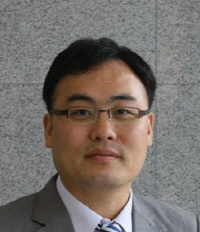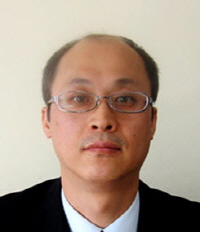
Professor HONG Byung Hee

Professor CHO Sung-Pyo
Bubbles are called bubbles because they vanishes so quickly before our eyes. However, bubbles survive quite a long time in nanoscale and affect our lives. Divers’ disease (decompression sickness), for example, is known to be caused by these nano-size bubbles remaining in divers’ blood streams.
Until now there had been only unsuccessful efforts in science to characterize these nano-bubbles in liquid phase. However, the character of what was invisible and invincible has finally been revealed for the first time by SNU researchers’ graphene technology.
Professors HONG Byun Hee and CHO Sung-Pyo’s team have demonstrated how nano-bubbles in water can be observed using graphene membrane and in-situultra-high vacuum transmission electron microscopy (UHV-TEM).
The team encapsulated the liquid-phase nanobubbles in graphene membrane and observed how they grew by merging with adjacent ones. They also showed the critical radius of nanobubbles that determines its long-term stability as well as two different growth processes of merging nanobubbles depending on their relative sizes. First, when the nanobubble sizes are significantly different, an Ostwald ripening-like merging process is apparent, while similar-sized bubbles coalesce as their inter-bubble boundary breaks. In the case of two similar-sized nanobubbles, they become one after breaking their barriers, followed by transforming in shape into dumbbell-like and spherical structures. They also observed that the instantaneous rupture of the ultrathin water membrane between nanobubbles allows direct unhydrated gas transport that has not been previously observed. This instantaneous break junction of the ultrathin water membrane is observed mainly as the thickness decreases below 2 nm.
The observed nanobubbles through the demonstration are the smallest ones which have been observed so far and are expected to be applied not only to basic research such as gas diffusion and propagation in liquid but also to various kinds of diseases’ cause and treatment such as decompression sickness.
“There are countless invisible nanobubbles in blood and cells in the human body and it is conjectured that decompression sickness results from the abnormally grown nanobubbles that block the blood vessel,” said Professor HONG Byung Hee. He also expressed his anticipation that these research will elucidate many natural phenomena and vital activities including the occurrence and transportation of gas.
HONG Byung Hee pioneered chemical research studies toward the practical applications of graphene. For this contribution, he was invited by the Nobel Committee to give a presentation at the Nobel Symposium on Graphene and Quantum Matter in 2010.
CHO Sung-Pyo's research interests include scanning electron microscopes (SEM), transmission electron microscopy (TEM) and atomic resolution TEM analysis. He is a research professor working jointly with the National Center for Inter-University Research Facilities.
- Professors HONG and CHO’s findings have been published online in the February 2015 edition of the journal Nature Communications on February 2015.
- Professors HONG Byung Hee and CHO Sung-Pyo’s lab: http://www.graphene.re.kr/
- SNU Department of Chemistry: http://chem.snu.ac.kr/
Written by CHUNG Taejoong, SNU English Editor, tijay@snu.ac.kr
Proofread by Melora Brett Briana Johnson, morningcalm2@gmail.com

